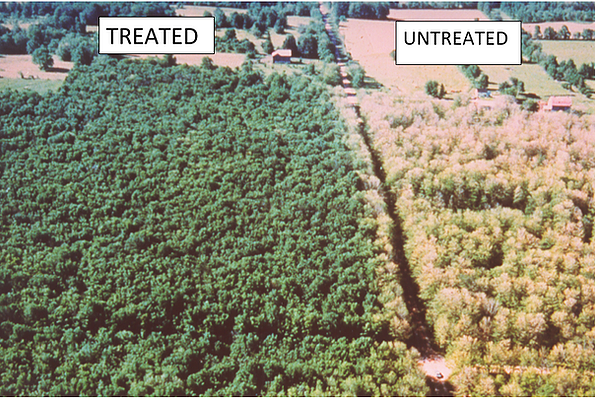Monitoring for Pests and Disease Affecting Trees and Shrubs in Niagara Region: A Fall Guide
Monitoring for pests and disease in the Fall during the Autumn months is a fantastic opportunity to see what issues are prominent in your landscape. This will allow you to be better prepared for spring! Below are a few pests to look out for, and what you can do to protect your backyard oasis.
The Niagara Region, known for its picturesque landscapes and fertile lands, isn’t just an attraction for tourists. It’s also home to a diverse range of plant life. While the natural beauty is abundant, the area is not without its challenges, especially when it comes to pests and diseases that target trees and shrubs. Fall is a critical season to monitor and identify issues that may affect local flora.
Common Pests
- Gypsy Moth Caterpillars
Notorious for their voracious appetite, gypsy moth caterpillars can severely defoliate trees. These caterpillars are most active during late spring and early summer, but their egg masses can be found and removed during the fall to help control next year’s population. Although they were not prominent during the 2023 season, their populations are known to fluctuate each year, so always keep an eye out!
- Box Tree Moth
This invasive pest is a recent concern for boxwood plants. The caterpillars feed on the leaves, leading to defoliation and eventual death of the plant if not managed, During fall, look for webbing, scat, pale leaves (that may drop), and consider sticky traps, pheromone traps, or other control measures to reduct their numbers.
- Scale Insects
These small, stationary pests can often go unnoticed until substantial damage has occurred. They attach themselves to the branches and trunks of trees and shrubs and sap them of nutrients. During fall, look for abnormal growth on trees, or sticky substances on the leaves.
Common Diseases
- Apple Scab
Affecting apple and crab-apple trees, this fungal disease is visible through dark, scab-like lesions on the leaves. During fall, it’s essential to rake and remove any fallen, infected leaves as they can serve as a source of next year’s infections.
- Tar Spot
Primarily found on maple trees, tar spot diseases causes large black spots on leaves. While the disease is mostly cosmetic, removing and properly disposing of infected leaves in the fall can help control its spread.
- Fire Blight
A bacterial illness, fire blight affects a variety of fruit trees and ornamental shrubs. If you notice wilted, blackened leaves and stems, consider pruning the infected areas during the fall, taking care to cut out below the infected tissue and cleaning all tools between each cut.
Management and Prevention Tips
- Regular Inspection: A routine check of trees and shrubs can go a long way in early identification of problems.

- Consult Professionals: If you are unsure about the issue your plants are facing, seek advice from certified arborists.
- Chemical Treatments: For severe infestations and diseases, chemical treatments can be applied, although it’s advisable to leave this to professionals
- Sanitation: Keep your garden clean by removing fallen leaves, branches, or other plant materials showing signs of infection
- Native Plants: Using native plants in your garden can minimize the risk of attracting non-native pests and diseases
As residents of the Niagara Region, it falls upon us to take steps to preserve its natural beauty. The fall season offers a prime opportunity for taking stock of the health of our local trees and shrubs, making plans for treatment, and preparing for the spring season ahead. By staying informed and vigilant, we can contribute to maintaining the area’s ecological well-being for generations to come!
If you suspect any pests or diseases on your property or in the surrounding areas or to learn more about monitoring for pests and disease, please contact our Plant and Health Care Specialists at Safe Tree by calling 289-650-1775 or email admin@safetree.ca.
Click HERE to learn more about our Plant Health Care Memberships.
Click HERE to check out our Instagram and stay up to date with what’s happening at Safe Tree.
